Innovative Egg Packaging Solutions
From Trays to Custom Sleeves
According to the Food and Agriculture Organization of the United Nations (FAO), global per capita egg consumption has continued to grow over the past decade, with China, Japan, and the United States leading the packing. As a frequently consumed daily item, eggs have directly driven an increase in packaging demand. Egg packaging can directly help brands showcase their eco-friend liness, organic nature, free-range farming, environmental friendliness, and freshness, creating a positive first impression.
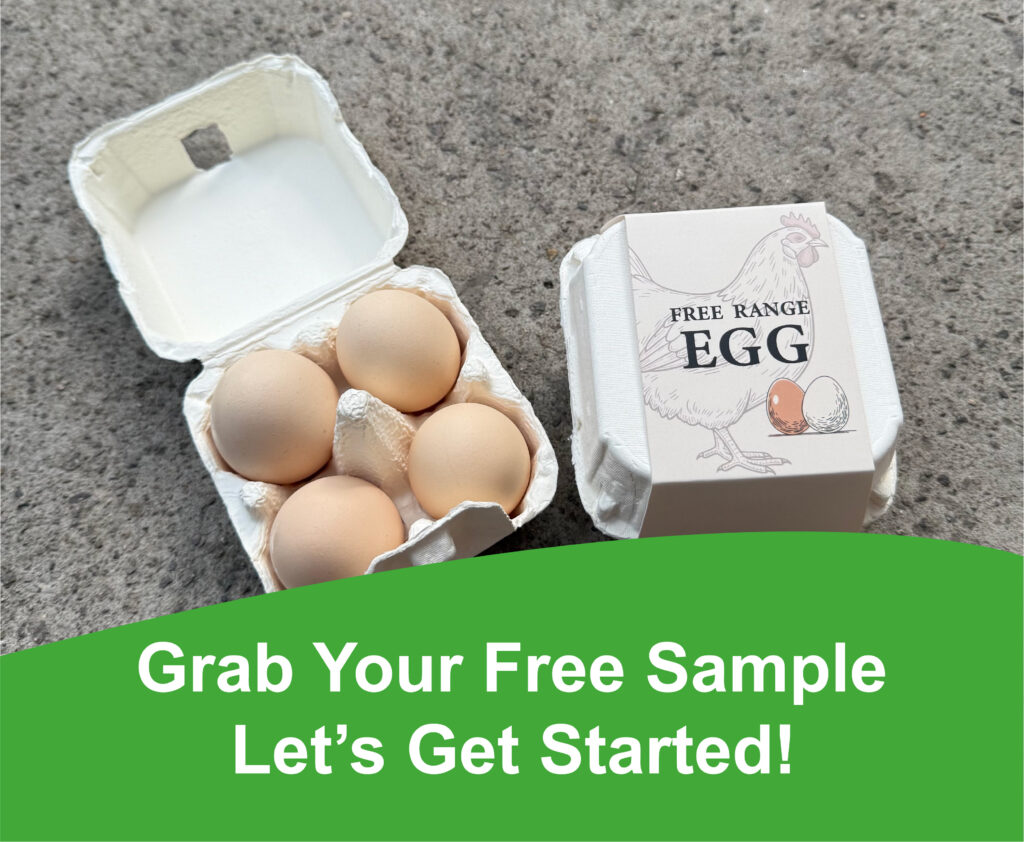
According to the Food and Agriculture Organization of the United Nations (FAO), global per capita egg consumption has continued to grow over the past decade, with China, Japan, and the United States leading the packing. As a frequently consumed daily item, eggs have directly driven an increase in packaging demand. Egg packaging can directly help brands showcase their eco-friend liness, organic nature, free-range farming, environmental friendliness, and freshness, creating a positive first impression.
As a daily consumer product, eggs are a vibrant, fresh food. The thousands of breathing pores on the eggshell surface must ensure unimpeded breathing during transportation. Eggs are also very fragile, requiring extreme care and attention during both collection and transportation. Therefore, unlike other packaging methods, egg packaging must not only protect the eggs but also take into account portability, usage scenarios, and transportation methods.
In the global market, egg trays are broadly divided into plastic and paper pulp. Paper pulp, as a natural material, offers unique environmental advantages. Compared to plastic, paper pulp is naturally biodegradable, typically breaking down in the natural environment within a few months to a year, without causing long-term pollution to soil and water sources.
This aligns perfectly with the environmental preferences and regulatory requirements of European and American countries. For example, the EU encourages the use of renewable and biodegradable materials in food packaging to reduce the environmental burden of plastic waste.
Paper pulp egg trays are primarily made from waste paper or recycled pulp, meaning the production process itself is a form of resource recycling. Repurposing waste paper not only reduces deforestation but also lowers production costs and carbon emissions. Compared to plastic production, paper pulp molding consumes less energy and has a smaller carbon footprint, further aligning with companies’ ESG (environmental, social, and governance) sustainability goals.
At the end of their lifespan, pulp egg trays can be recycled back into the paper making industry chain through a recycling system, completing a closed loop of “production-use-recycling-reuse,” maximizing the material’s lifecycle. This recycling model not only benefits the environment but also serves as a key selling point for farms, supermarkets, and brands. Consumers often trust and favor products labeled “100% recyclable” or “biodegradable,” enhancing the brand’s social responsibility image.
Ecofold not only provides sturdy and environmentally friendly egg trays, but also offers the ability to customize the outer sleeve, stickers, thank-you cards, and more, creating a complete packaging solution.
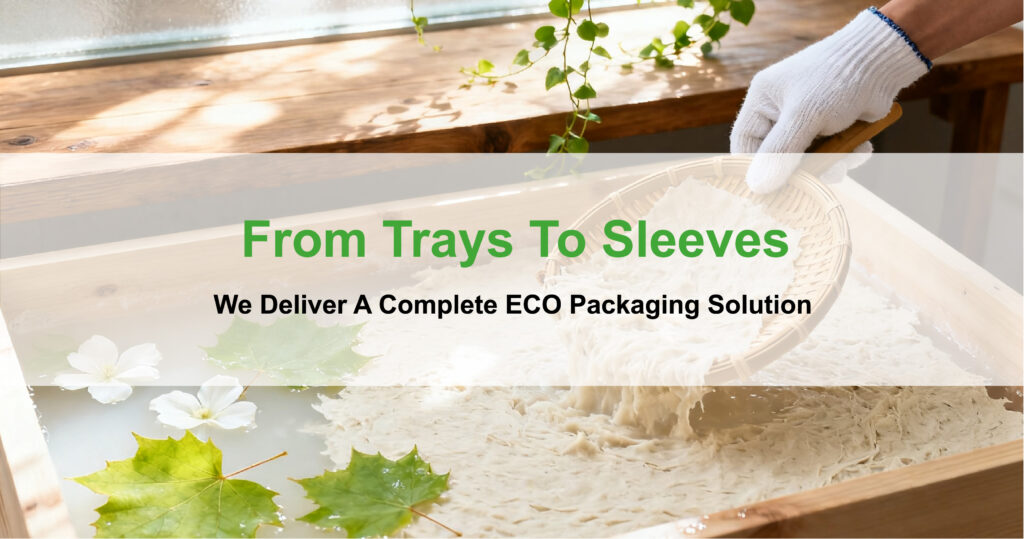
First, let's introduce the egg tray.
Made from natural pulp, the egg tray is biodegradable and environmentally friendly. Its carefully designed shape perfectly fits the shape of the egg, providing a secure, shock-resistant, and pressure-resistant environment. It’s also recyclable and environmentally friendly.
The paper pulp egg tray is highly breathable, keeping eggs fresh. We offer a variety of egg tray sizes, including 4, 6, 10, 12, and 18 egg trays. These trays are suitable for family farms, large farms, supermarkets, and more.
External Paper Sleeve
From farm to fork, the importance of egg packaging is undeniable. Well-designed egg packaging helps attract consumers’ attention and build brand awareness. Clear, concise egg labels help strengthen consumer trust in the brand.
The sleeve is typically made of white cardboard or kraft paper. Printing can be done on one or both sides. Sleeves can be processed with lamination, oiling, spot UV treatment, hot stamping, embossing, and other processes. We customize sleeve production to suit the size of the egg tray.
Stickers
Many brands choose to apply stickers directly to the egg tray. Stickers are cheaper than sleeves. They can be designed to include QR codes, anti-counterfeiting codes, nutritional information tables, and more. Some brands also choose to apply stickers to the inside of the paper tray, keeping the exterior packaging clean and fresh. Each brand has its own advantages and features.
This brings us to a key question: should I choose a sleeve or a sticker?
Advantages of an egg tray + sleeve
A sleeve wraps around the egg tray on all four sides, making the overall packaging more complete and unified, creating a more unified brand image and a stronger visual impact when sold on the shelf. Furthermore, since all four sides can be printed on, you can include more content on the sleeve, such as your brand logo, description, nutritional information, and more.
The sleeve paper allows for more advanced craftsmanship, resulting in a more premium look. It’s ideal for high-end brands like “organic,” “natural,” and “original.”
Advantages of an Egg Tray + Sticker
The production cost of stickers is lower than that of sleeves. Stickers can be applied directly to the egg tray, offering great flexibility. This saves time and effort, making it ideal for seasonal sales. However, due to limited display space, they are usually only printed with a logo and simple information.
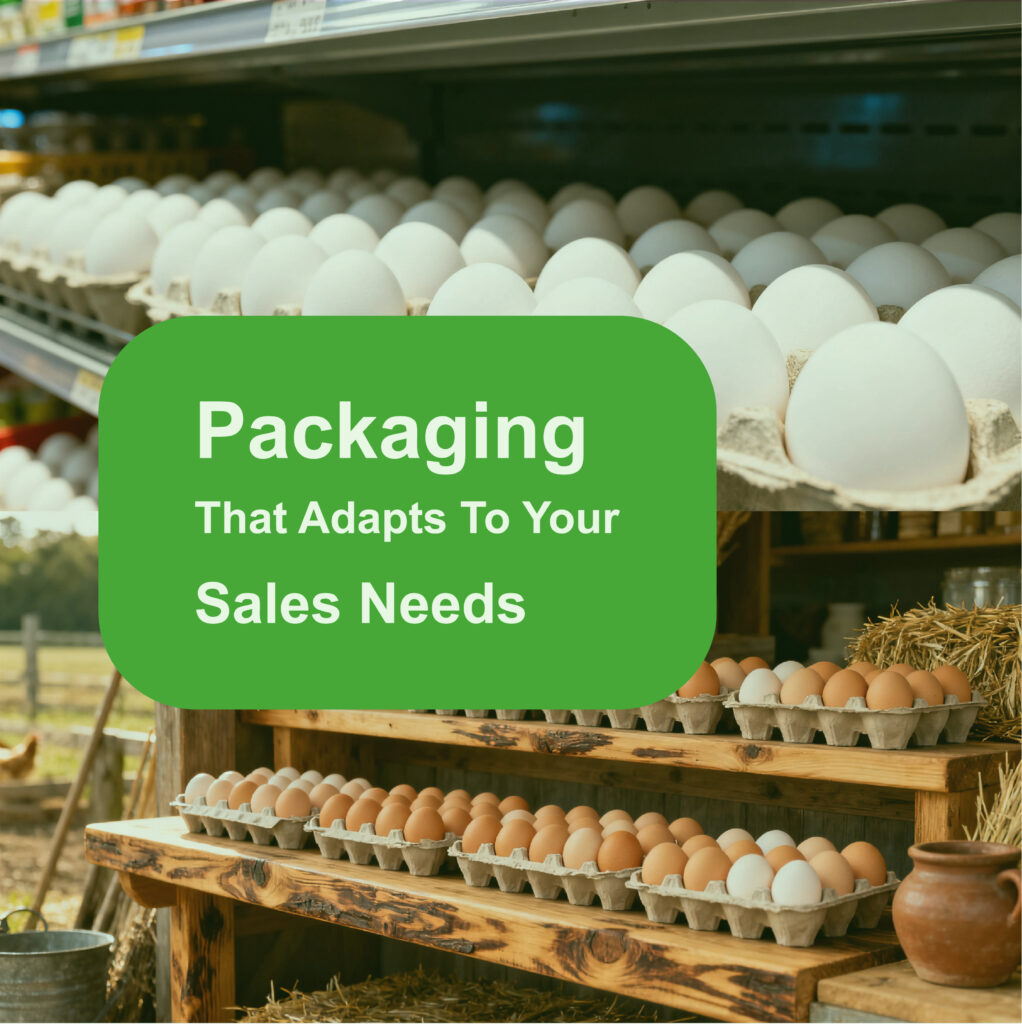
In which situations are custom sleeves the best choice?
If your eggs need to be transported long distances or frequently stacked during storage, we recommend using a sleeve.
This provides an additional layer of protection for the egg tray. We also recommend sleeves if you require shelf-level display. Sleeves are more suitable for display and photo opportunities, and can enhance the visual appeal of your products on e-commerce platforms.
Which scenarios are ideal for using custom stickers?
If you’re a wholesale market or catering supply chain, your packaging focuses on cost and informational labeling, not aesthetics. We recommend stickers. If you have frequent seasonal promotions, quick sales, or limited-time events, you can use specially designed stickers to quickly respond to market needs.
The most important function of egg tray packaging is protection. It protects the eggs and prevents them from being damaged during transportation and stacking.
But branding also plays a crucial role in egg packaging. Stickers and envelopes act as mobile billboards, ensuring instant recognition on the shelf.
All packaging options are tailored to the market. They are suitable for supermarket retail, farm-to-table sales, online e-commerce delivery, and more.
Innovative Egg Packaging
Egg packaging was not limited to egg trays. The egg market has always been one of the most dynamic and resilient sectors in the global food industry. Eggs are not only a staple in daily diets but also a product that reflects consumer awareness of freshness, safety, and sustainability. Because of this high level of demand, the need for innovative packaging solutions continues to grow year after year. From traditional pulp cartons to modern designs that incorporate smart labels, window cuts, or eco-friendly coatings, the path of innovation in egg packaging never stands still. For example, Bnavan’s quail eggs, pictured here, use mailer boxes with cardboard dividers.
In recent years, we have seen a shift in consumer expectations. Packaging is no longer viewed as a simple protective layer; it has become a key communication tool between brands and consumers. Shoppers want packaging that feels natural, environmentally responsible, and aligned with their lifestyle choices. This trend has given rise to many creative solutions: sleeves with transparent windows, recycled pulp trays with premium printing finishes, or hybrid packaging that combines pulp with bio-based plastics for added strength. Every new design reflects the fact that innovation in egg packaging is an ongoing process that adapts to both consumer demand and regulatory requirements.
At Ecofold, we firmly believe that the egg packaging market will never reach a standstill. Instead, it will continue to evolve, offering opportunities for creativity and differentiation. As a professional packaging manufacturer, we are not only focused on producing standard pulp trays and sleeves, but we also welcome new concepts that push the boundaries of design. Our team is open to collaborating with farms, retailers, and brand owners to turn innovative ideas into reality. Whether it is experimenting with new materials, adjusting structural designs for better protection, or developing packaging that enhances shelf visibility, Ecofold is ready to support these projects from concept to mass production.
One of the core values we hold is flexibility. Innovation often starts with small trials—prototypes that test a new idea before it is introduced to the wider market. Ecofold is fully equipped to provide sample development, including white samples for structural testing or printed samples for marketing evaluation. By working closely with our clients, we help them validate their designs quickly and cost-effectively, reducing the risk of large-scale investments. This collaborative approach allows new packaging concepts to be tested, refined, and successfully launched into the market.

Moreover, we understand that true innovation does not always come from within factories alone. Many creative ideas are initiated by designers, marketers, or even farmers who wish to present their products in a unique way. Our role is to make these ideas feasible in production. We bridge the gap between creativity and manufacturability, ensuring that bold concepts can be translated into functional, cost-effective, and environmentally friendly packaging solutions. This willingness to experiment and adapt is what sets Ecofold apart as a forward-looking partner in the egg packaging industry.
Looking ahead, we are confident that the pace of innovation in egg packaging will continue. Sustainability concerns, digital printing technologies, and the rise of e-commerce will all bring new opportunities to reimagine how eggs are packaged and presented. Ecofold will remain committed to exploring these directions, standing alongside our partners to create packaging that is not only protective and practical but also memorable and inspiring. For us, innovation is not an option—it is the path we choose to stay relevant and to lead in a vibrant and ever-changing market.
Not sure how your design will look in reality?

About Ecofold Packaging
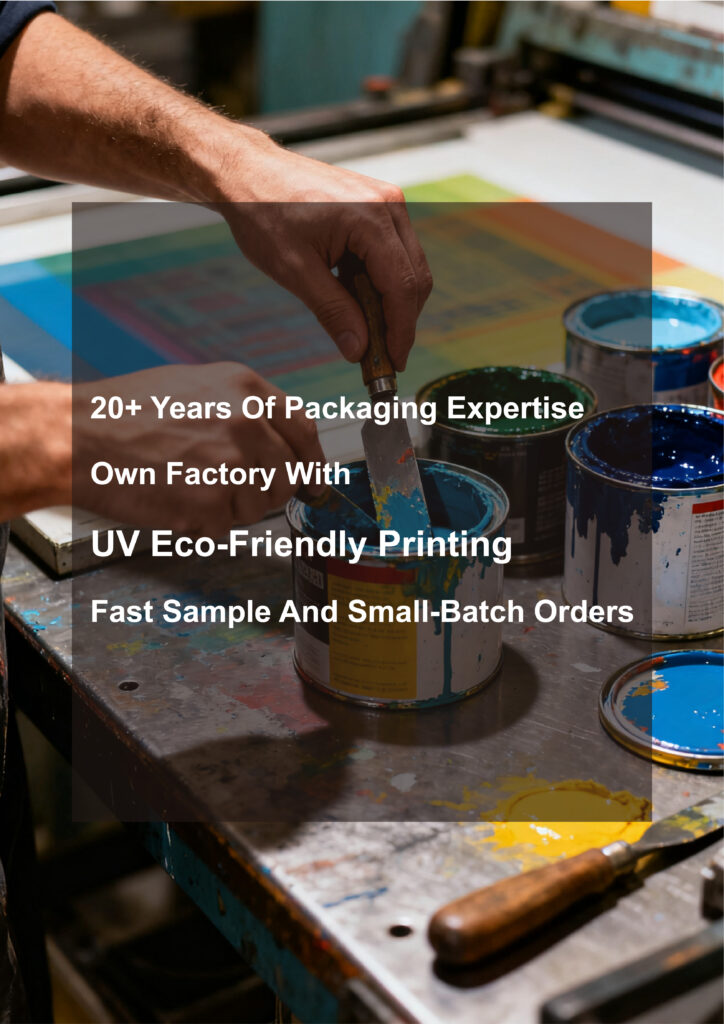
At Ecofold, we bring your packaging ideas off the screen and into your hands. Get a free sample today and see the difference.


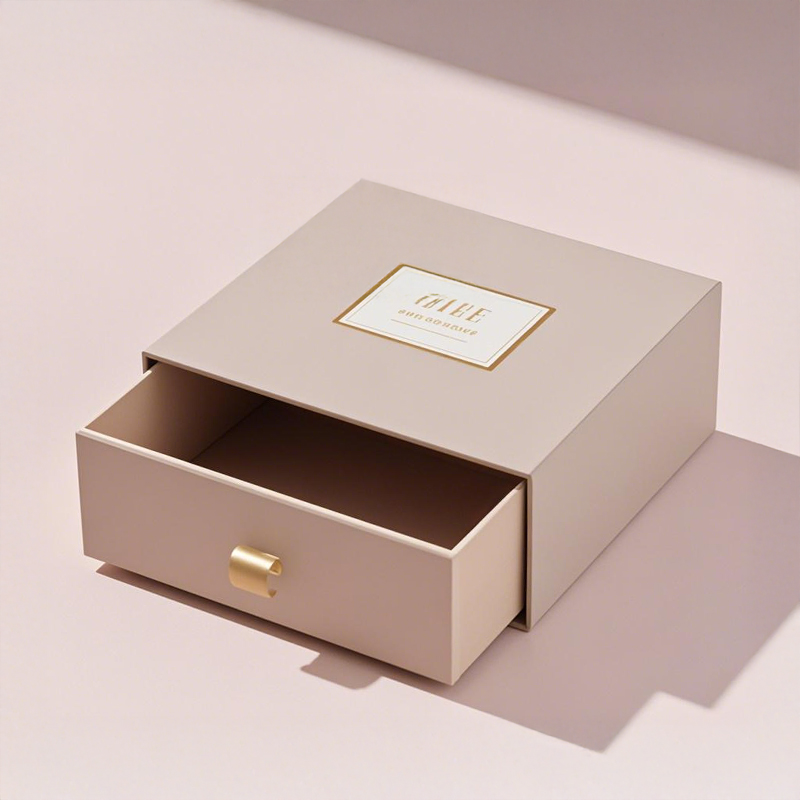
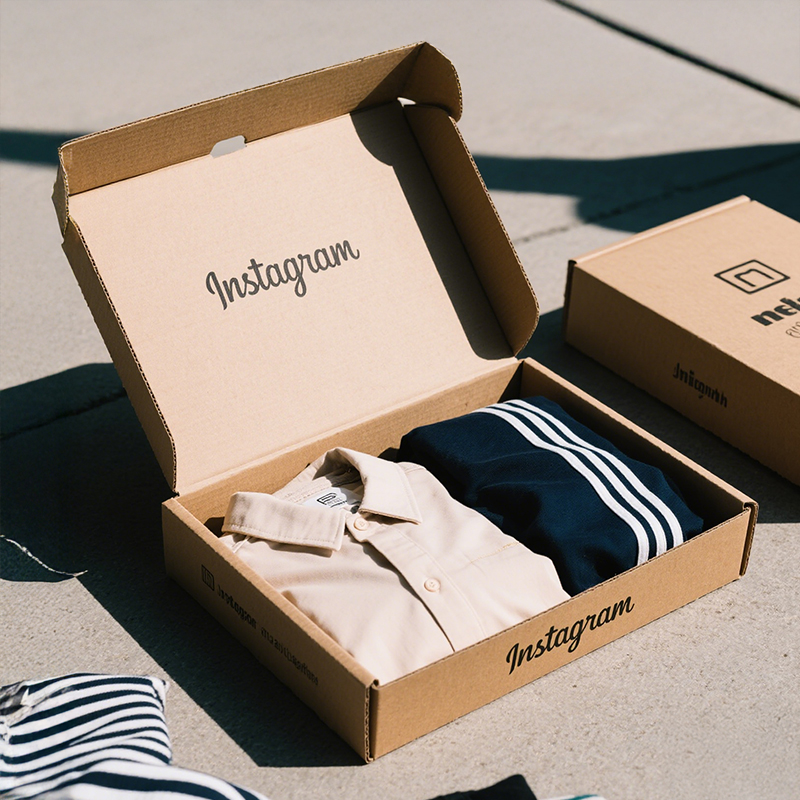


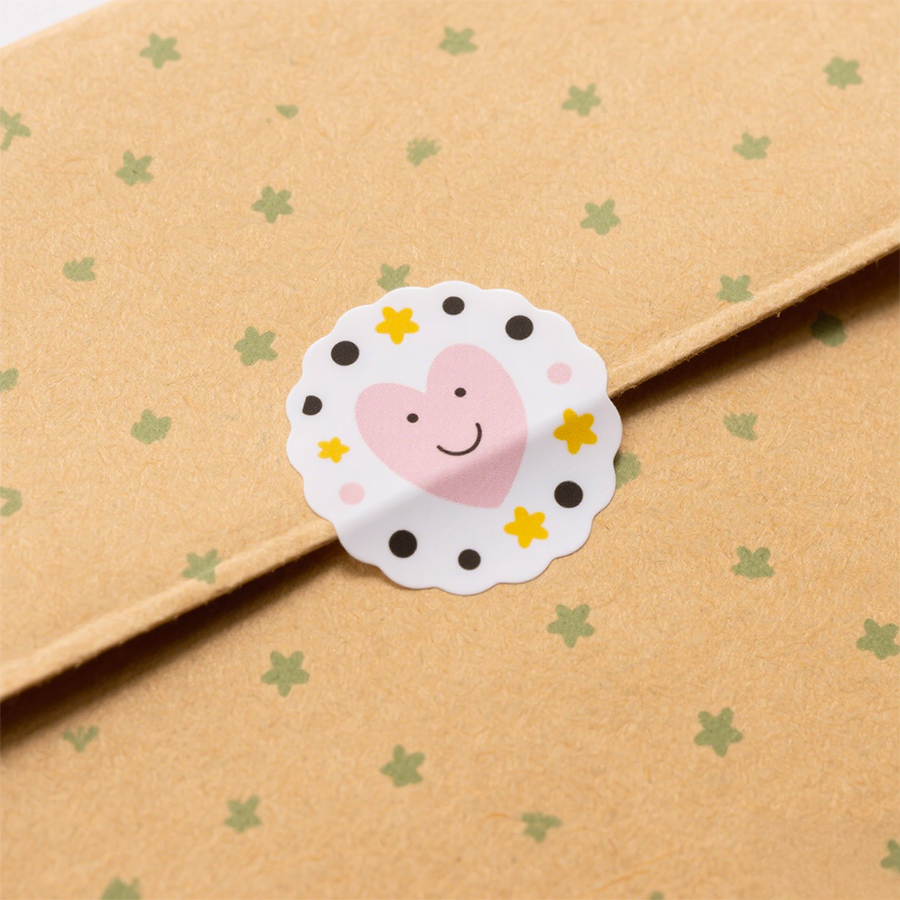


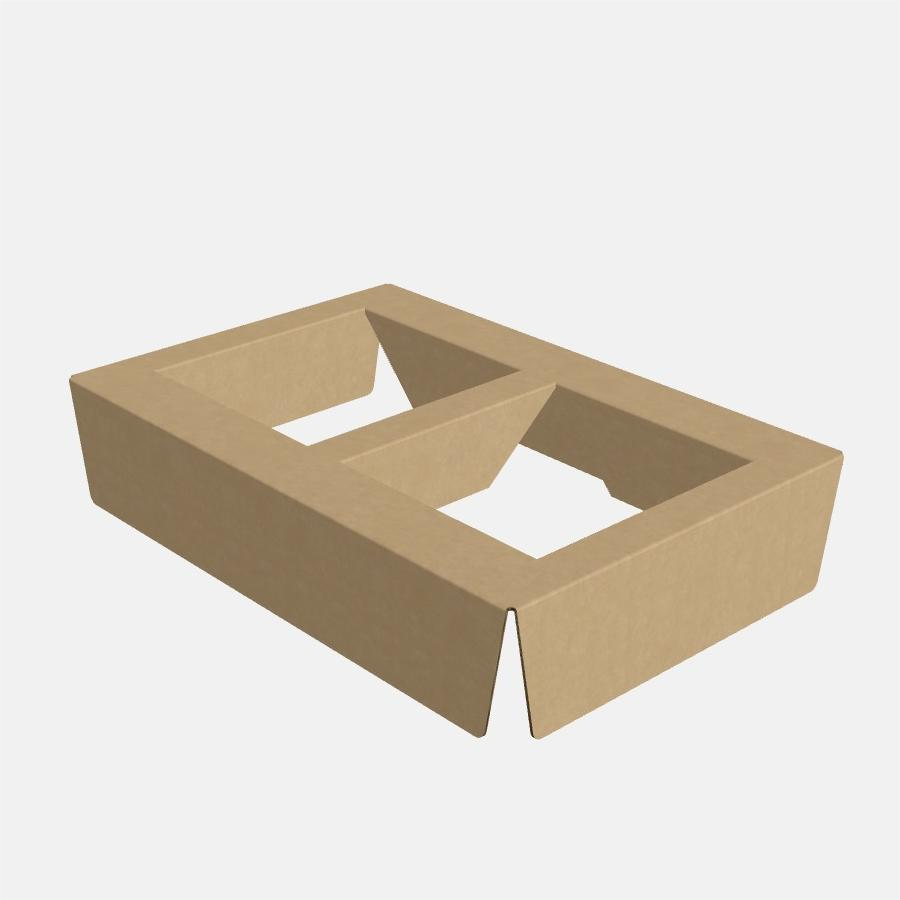


Add comment